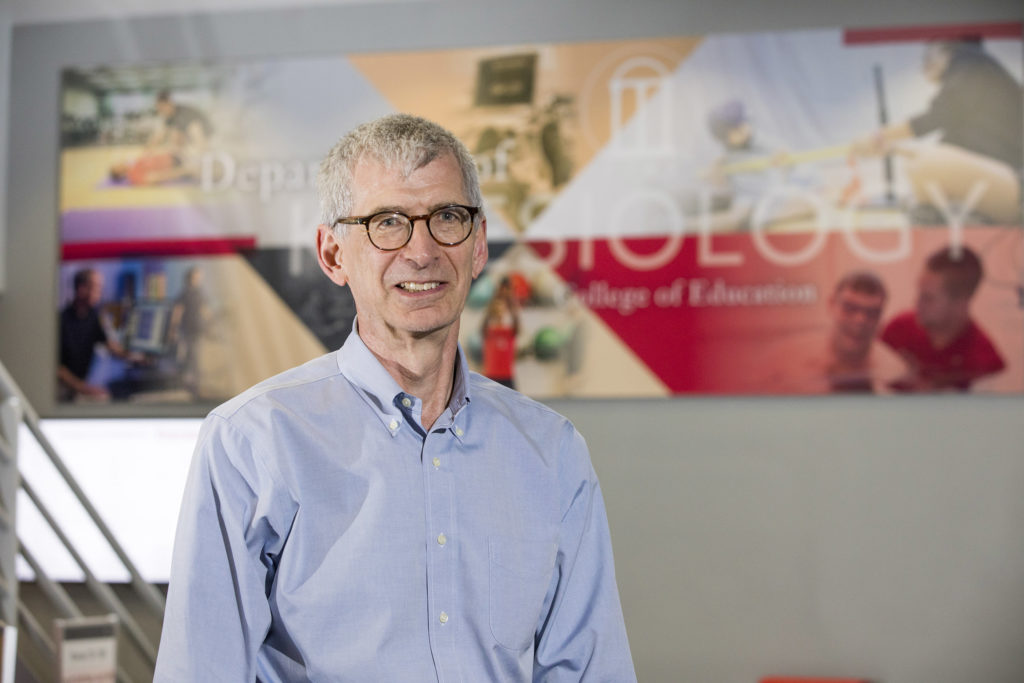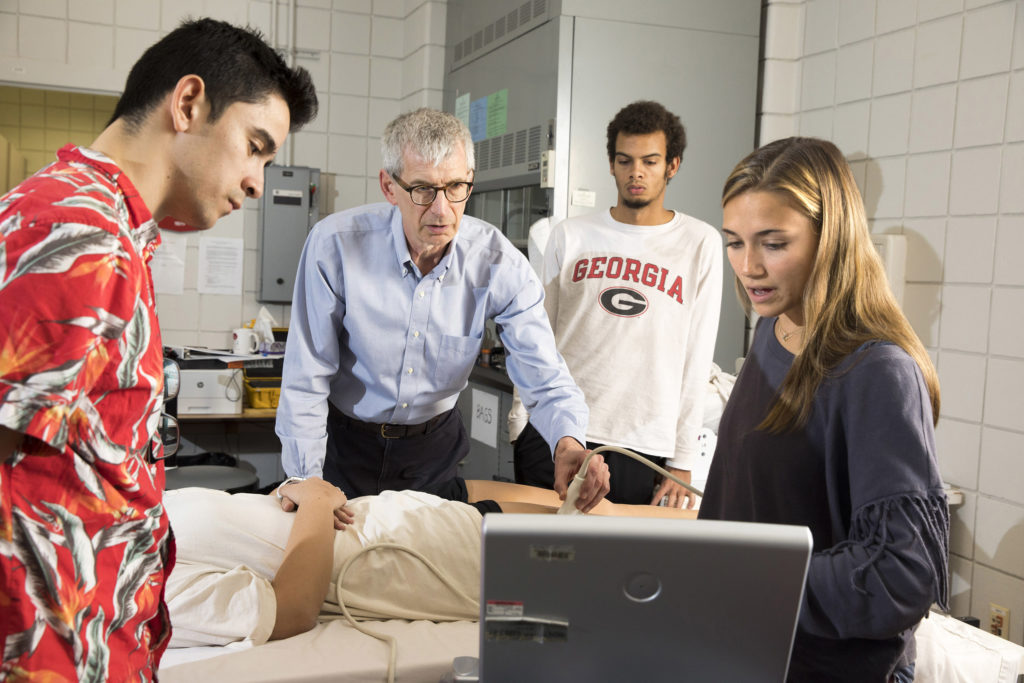Kevin McCully, a professor of kinesiology in the College of Education, has founded a startup company based on the non-invasive method his lab developed to measure muscle energy capacity.
When did you come to UGA and what brought you here?
I arrived at UGA in the fall of 1999. The year before, I was a research assistant professor in the division of geriatric medicine at Allegheny University of the Health Sciences in Philadelphia. AUHS went bankrupt that year (three campuses, nine hospitals and 35,000 employees). That was quite a story. I chose UGA because of the faculty members in the kinesiology department at the time, including Gary Dudley, who was a distinguished professor and an expert in muscle physiology.
What are your favorite courses and why?
I am fortunate to be able to teach classes I like. I enjoy teaching “Exercise Physiology” because the topic is so interesting; how the body responds to exercise is amazing, and of course exercise has important health consequences. I also teach a class called “Introduction to Wellness for People with Disabilities.” Helping our students exercise people from the community with disabilities is such a positive experience, and it is nice to know the class benefits people in the community as well as our students. Finally, I teach a First-Year Odyssey seminar called “Communicating with People with Disabilities.” I teach that seminar with a dear friend who has a significant disability. Seeing her impact on our students as they transition from high school to college is very satisfying.
How do you describe the scope and impact of your research or scholarship to people outside of your field?
I often say that as an undergraduate I was a biology major, math minor and a swimming coach. My current research is basically the same combination. I use my physiology and math background to develop new ways to study skeletal muscle. I am particularly interested in studying and helping people with disabilities and injuries. Thus, I want to develop state-of-the-art methods that are non-invasive, safe and appropriate for people. For example, I have been working on a method to measure muscle energy capacity (mitochondria) by shining light through the skin into muscles. My lab has become the world’s authority on this approach, and we have started a company (Infrared Rx, Inc.) to commercialize this method. Another project is to develop an app that can measure muscle endurance in clinical populations using painless electrical twitch contractions and simple accelerometers.
How does your research or scholarship inspire your teaching, and vice versa?
I have one of the youngest research labs in the world. On my application to UGA, I listed my teaching philosophy as interacting with students one-on-one in the lab. These interactions remain the most enjoyable part of my research/teaching at UGA. In our project studying muscles in people with spinal cord injuries, I noticed that we had 100% compliance with our training program. The participants with spinal cord injuries loved to come to my lab because of the student helpers I used on this study. Based on this, we have built a whole wellness class around pairing undergraduate pre-health students with people with disabilities. I also use undergraduate students to do my “pilot” research, what I call my “wild and crazy ideas.” If the idea works then we build our future research around it, and if it doesn’t the student still gets a valuable research experience.
What do you hope students gain from their classroom experience with you?
I have two main classroom goals. In my “Exercise Physiology” lecture course, my goal is to relate the course material to the students’ life experiences and their future career goals. An example is one year I lectured on “fatigue.” In the next lecture period one of the students raised his hand and stated that he saw me demonstrate “central fatigue.” He had seen me running for a bus, then stopping and walking. I had decided it wasn’t worth running all the way to catch the bus. I want students to apply what I say in class to what they observe in the real world, even if it is me! My other course is “Introduction to Wellness for People with Disabilities.” In this course, we put undergraduate students together with people from the community with various disabilities (from Parkinson’s disease to Down syndrome). Students learn disability awareness and develop their interpersonal skills.
The one UGA experience I will always remember will be …
I have had a series of high school students in my lab through the Young Dawgs Program. One student, Hannah Hsu, asked if she could do a high school science fair project with me. A scientist friend of mine from Japan had a method to study muscle metabolism using light. I had known about this method for years but didn’t think much of it. I decided to have Hannah test the light method of measuring muscle metabolism. Hannah and I obtained human subjects approvals, developed the experimental protocol, and she recruited eight of her high school buddies and did the measurements. Sure enough, the method worked, and she made the finals of the state science fair competition. My lab went on to publish over 20 papers on the light method, and we refined the method enough to generate two U.S. patents. We even started a research company, which has gotten two NIH business transfer grants. Hannah is now in physician assistant school, and because of her high school science fair project, we are now the world’s experts at measuring human muscle mitochondria using light.

